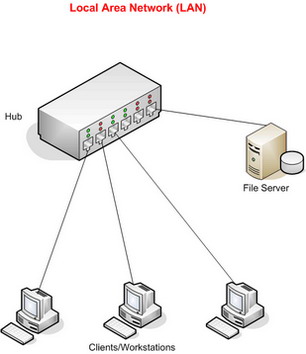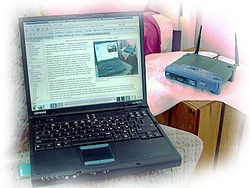Common Network Environments
Local Area Network
A local area network (LAN) is a computer network covering a small physical area, like a home, office, or small group of buildings, such as a school, or an airport. On a typical LAN application, softwares and users' data files are stored on a central computer called a file server (SERVER). Each computer on a LAN is called a workstation. To connet to a LAN, a workstation must have a network card. This is a device through which computers communicate which each other.

Wireless Local Area Network (WLAN)
A wireless LAN (WLAN) links two or more computers or devices using spread-spectrum or OFDM modulation technology based to enable communication between devices in a limited area. This gives users the mobility to move around within a broad coverage area and still be connected to the network.

For the home user, wireless has become popular due to ease of installation, and location freedom with the gaining popularity of laptops. Public businesses such as coffee shops or malls have begun to offer wireless access to their customers; some are even provided as a free service. Large wireless network projects are being put up in many major cities.
Wide Area Network
A wide area network (WAN) is a computer network that covers a broad area (i.e. any network whose communications links cross metropolitan, regional, or national boundaries). Less formally, a WAN is a network that uses routers and public communications links. The computers in a WAN are not permanently connected to each other with data cables. They communicate with each other through telephone lines, radio signals and satellite links. The largest and most well-known example of a WAN is the Internet. Computers need a MODEM to communicate with others computers on Internet.




